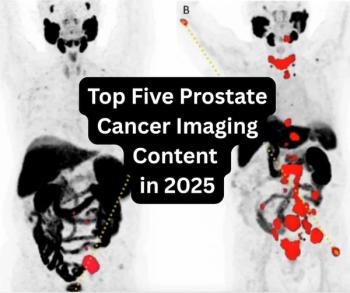
MR Shines Light on Pancreatic Flow
A formidably named bit of technology can open a new window into pancreas function, according to a new study in the journal Radiology. Serial magnetic resonance cholangiopancreatography (MRCP) with a spatially selective inversion-recovery (IR) pulse can provide insights into pancreatic flow noninvasively, Japanese researchers reported.
A formidably named bit of technology can open a new window into pancreas function, according to
Lead author Katsuyoshi Ito, MD, of Kawasaki Medical School’s Department of Diagnostic Radiology and colleagues used MRCP with a spatially selective IR pulse to directly visualize the flow of pancreatic juice, which they say can shed light on pancreatic exocrine functions and the mechanisms of pancreatic disease.
Their approach, the researchers said, is an improvement upon secretin-stimulated MRCP, which is somewhat invasive, reflects nonphysiologic information and only indirectly depicts pancreatic flow.
Fifteen subjects, average age 39.2 years, included 12 healthy volunteers and three patients with acute pancreatitis. The team performed MRCP with a spatially selective IR pulse every 15 seconds for 10 minutes. Ito and colleagues evaluated the resulting 40 images for the presence, frequency and magnitude of pancreatic juice inflow with a particular eye toward comparing the imagery from patients with pancreatic disease to those of healthy controls.
The team was able to observe pancreatic flow in more than 78 percent of healthy individuals, but in only 10.8 percent of patients with pancreatic disease (they were unable to observe the flow all in one of the patients). This suggests that the flow of pancreatic juice was lower in the pancreatic-disease patients, the researchers said, a finding further bolstered by the team's observation of pancreatic juice in ill patients moving a fraction as far as that of controls.
Newsletter
Stay at the forefront of radiology with the Diagnostic Imaging newsletter, delivering the latest news, clinical insights, and imaging advancements for today’s radiologists.



























